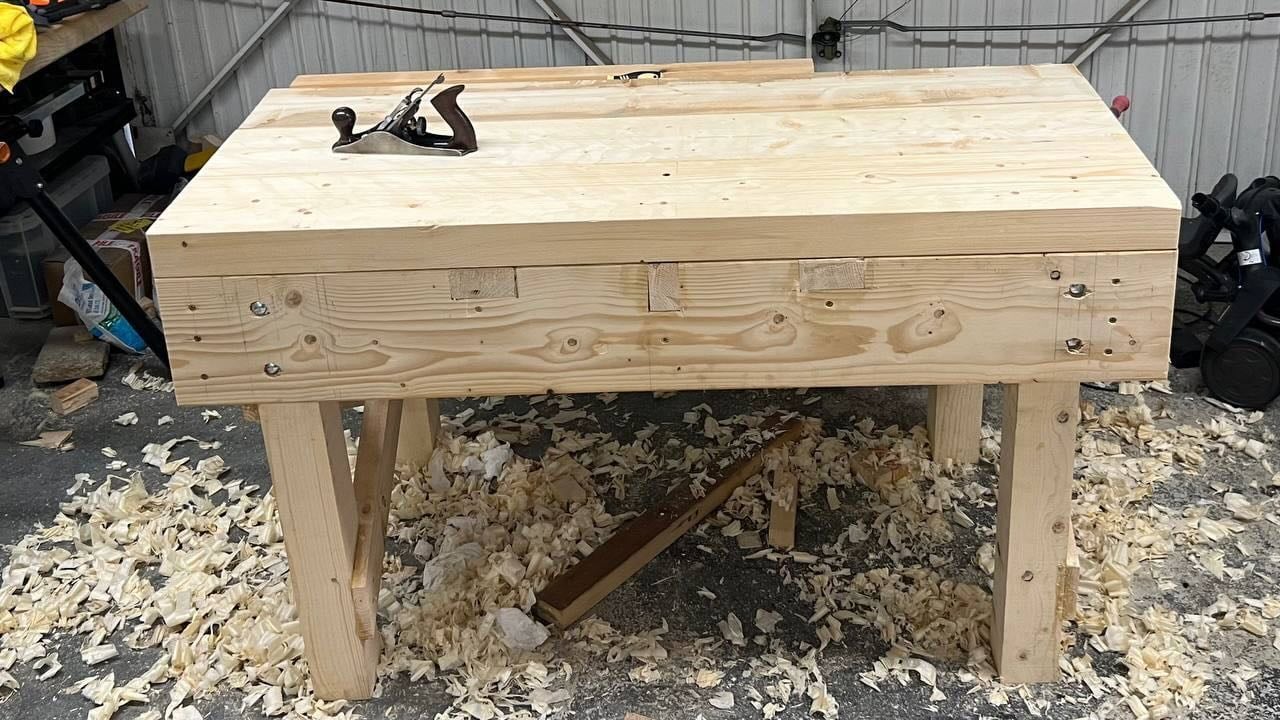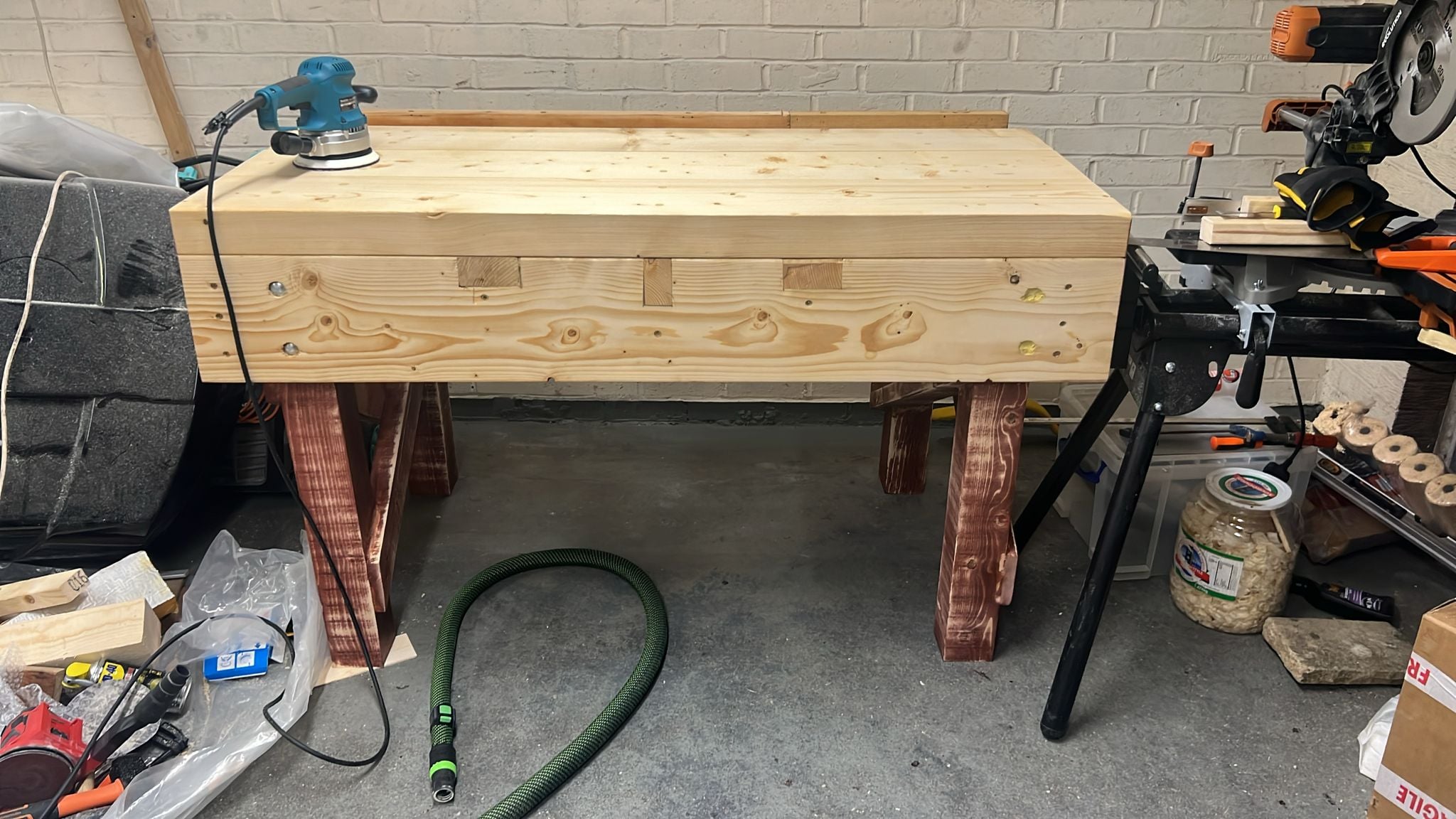I am reposting this from my reddit post which did not get any feedback, so hoping it would get some traction here, but maybe it is that bad that no comments needed 
I used the Briwax original clear beeswax and, even with a 3M mask on, it had a very strong chemical smell. I tried to use the Ronseal wood filler, and it also had a very nasty smell.
This is a woodworking bench and will not be in contact with food, but I would still prefer something, say, more on the eco/non-toxic side(if makes sense). For renovating a cutting board, I am planning to use a food grade mineral oil or raw linseed oil.
Would a 50:50 mix of melted beeswax and raw linseed oil give good penetration and protection for the bench? As far as I understand it may not be as long lasting as Briwax. Anything I can add or use to improve this, please?
I know this is going to have scuffs, marks and holes, and treatment is probably unnecessary, however I am trying to upskill myself and thought it would be an interesting opportunity to experiment with paint, fillers, sealants etc.
I regret painting the legs, looks like so decided to "weather" it a bit. Should have kept it as is, but it was a nice learning experience and saw a few things I should have done differently if this was a new piece:
so decided to "weather" it a bit. Should have kept it as is, but it was a nice learning experience and saw a few things I should have done differently if this was a new piece:
I used the Briwax original clear beeswax and, even with a 3M mask on, it had a very strong chemical smell. I tried to use the Ronseal wood filler, and it also had a very nasty smell.
This is a woodworking bench and will not be in contact with food, but I would still prefer something, say, more on the eco/non-toxic side(if makes sense). For renovating a cutting board, I am planning to use a food grade mineral oil or raw linseed oil.
Would a 50:50 mix of melted beeswax and raw linseed oil give good penetration and protection for the bench? As far as I understand it may not be as long lasting as Briwax. Anything I can add or use to improve this, please?
I know this is going to have scuffs, marks and holes, and treatment is probably unnecessary, however I am trying to upskill myself and thought it would be an interesting opportunity to experiment with paint, fillers, sealants etc.
I regret painting the legs, looks like
- Should have cleaned the glue immediately. I thought sanding would make it a breeze - it did not and it was nightmare to use a sander in tight and weird-angled spaces.
- Perhaps, sand all the rough sawn pieces upfront.
- Is it a good idea to paint everything upfront too?
- Planning, less ad-hoc design decisions

- I might have made it too wide






